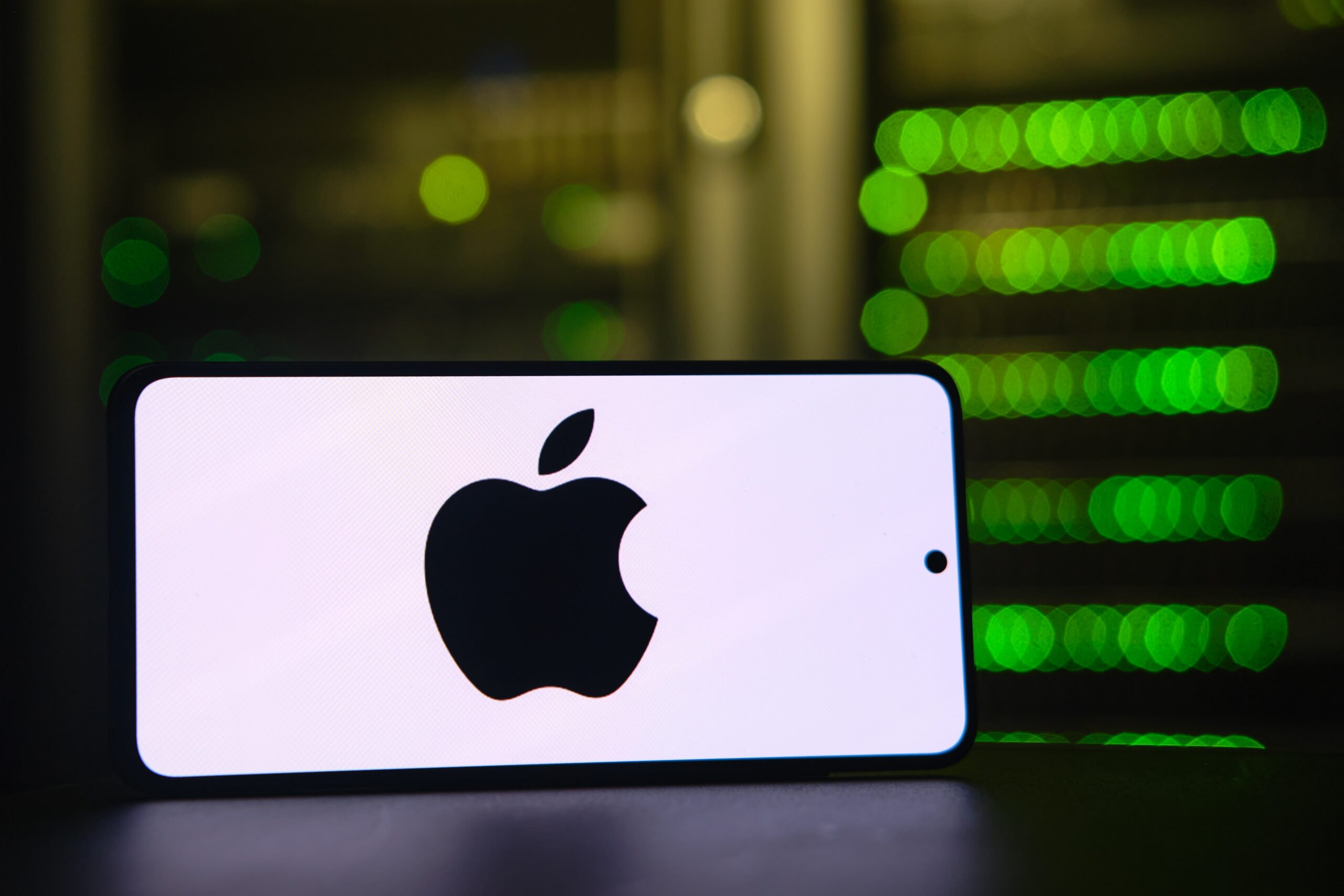Just five companies in the world are worth more than a trillion dollars. Of those, four are tech firms, and three are the largest cloud computing providers in the world with a combined market share of around 65% – Amazon, Google, and Microsoft. Referred to as “hyperscalers,” they’re all experiencing tremendous growth while targeting an opportunity that’s expected to double in four years, topping a trillion dollars by 2026.
Hyperscalers are large cloud service providers, that can provide services such as computing and storage at enterprise scale.
Credit: Red Hat
The Growth of Cloud Computing
Google’s recent presentation on their cloud computing efforts shows just how much growth remains in public cloud computing spending. With just over $500 billion being spent on cloud computing in 2022, that number is expected to reach $1 trillion by 2026.

About half of the above opportunity represents cloud infrastructure services of the type being offered by hyperscalers. Consulting firm Canalys tells us, “for full-year 2022, total cloud infrastructure services spend grew 29% to US$247.1 billion, up from US$191.7 billion in 2021.” The three largest hyperscalers saw varying levels of growth with Amazon actually underperforming overall industry growth of 29%.
- Google – growth of 36% year on year to account for 10% of total spend
- Microsoft – growth of 31% to account for 23% of total spend
- Amazon – all-time low growth of 20% to account for 32% of total spend
With cloud spend expecting to grow “just’ 23% this year, the slowdown can be attributed to cloud computing being a commodity that companies expect to use less of as they tighten their purse strings in the face of those “macroeconomic headwinds” everyone is talking about. Retail investors might wonder if the slowdown represents a buying opportunity as valuations adjust, but the bigger question might be just how much cloud computing exposure you’re getting from each of these hyperscalers. Here’s a look at how cloud revenues compare to total revenues along with overall gross margins for each.
| 2022 Cloud Revenues | 2022 Revenues | Cloud % of Total | 2022 Gross Margin | |
| 25 | 282 | 9% | 55% | |
| Microsoft | 57 | 204 | 28% | 68% |
| Amazon | 79 | 514 | 15% | 13% |
Google is the only hyperscaler operating their cloud division at a loss, so perhaps they’re temporarily sacrificing profits to capture as much growth as possible. Speaking of profitability, Amazon’s cloud division is carrying the entire company on its shoulders as seen below.

Canalys attributes Amazon’s growth stall to the “decline of enterprise customers’ spending, combined with rising server energy and operating costs.” And of course, we should all be blown away by how Microsoft manages to achieve 68% gross margins as one of the largest tech companies in the world. Talk about printing cash.
Sure, the growth of cloud computing has been slowing. Canalys tells us that “pay-per-use billing models will optimize cloud activities to reduce cloud consumption and save costs,” while new cloud contracts stall as “conservative budgeting among businesses will lead to less experimentation.” But there’s another tailwind that hyperscalers might benefit from which relates to all the companies out there offering SaaS solutions via the cloud.
On-Premise vs Cloud Computing
Software-as-a–service (SaaS) business models can be a bit tricky. Not all SaaS businesses offer their solutions via the cloud, while most cloud software offerings use SaaS business models. It all starts with a useful piece of software that can be used by many firms, usually across a broad swath of industries. For example, instead of developing your own customer relationship management (CRM) platform internally, you might just subscribe to Salesforce (CRM), the leading SaaS CRM tool and largest SaaS firm out there. If you’re sensitive about all your customer information being located in the cloud (on someone else’s servers), then you might choose to deploy the same software solution “on-premise” which means on your own servers internally. Not all SaaS vendors offer an on-premise offering, but many do, especially those that have been around long before cloud computing became en vogue.
Earlier this year, our piece on Bargain Hunting Software-as-a-Service Stocks talked about how moving from on-premise to cloud can save companies money. Naturally, not having to host a solution and support it internally costs less, and typically the SaaS vendor realizes a revenue uplift. The below example shows how PTC’s on-premise clients pay less when they move to the cloud overall, but increase their spending with PTC.

So, we might conclude that the recession will push companies to look at ways to save costs which should push more revenue to cloud offerings as firms move from on-premise to cloud. However, this uplift might be tampered by the aforementioned slowdown in overall cloud spending.
Pick and Shovel Plays on Cloud Computing
There’s a temptation to go down the infrastructure rabbit hole to try and figure out what hardware hyperscalers will consume as they build the world’s largest technology stacks. It’s a particularly tough topic to research because each hyperscaler is developing their own unique solution, oftentimes with internally developed software and hardware components.
Hyperscalers are starting from scratch, completely reimagining how networks should be built and operated. Their clouds, numerous network-related experiments over the past decade, plus the raft of new network-related technologies on the road map will enable hyperscalers to build asset-light, automated networks at a fraction of the cost of traditional networks.
Credit: Technology Business Research, Inc.
We’ve always viewed our investment in NVIDIA as a way to play the growth of big data, in particular, the revenues attribute to their data center segment.

Additional ways we’ve looked at to play the growth of big data included data center REITs, and traditional data storage hardware like hard drives which are now morphing into more advanced devices that act more like memory. Pure Storage (PSTG) is one company we like in this space with their high margin and growing subscription business, though hardware will inevitably come under pricing pressure. Sure, with gross margins in the high 60s and a storage solution that’s already cost-competitive, Pure Storage can afford to squeeze their margins over time if they need to, but there’s also their sole dependency on flash chips that’s a concern.
Perhaps a better way to play the growth of cloud computing would be to find a software solution that works across all hyperscalers which allows developers to easily deploy and maintain cloud-based software solutions. Such a solution wouldn’t just go away once the massive cloud computing migration reaches maturity, it would continue to thrive as companies need such services to continue deploying new versions of their applications over time. Regardless of which hyperscaler has the most market share, or is offering the cheapest priced commodity at any given time, a solution that’s utilized by all would thrive regardless.
Conclusion
The growth of cloud computing accompanies the growth of big data as two themes we’d like to have exposure to. Our series of research pieces on big data led us to conclude that Snowflake (SNOW) – at a reasonable valuation – offered a way to benefit from the growth of big data. Also in contention was Pure Storage, a firm that provides the picks and shovels for the data centers of tomorrow. When it comes to getting more exposure to the continuing growth of cloud computing, there’s a software firm out there that helps companies manage their cloud deployments, one that’s been raised by a number of premium subscribers over the past years. Any guesses as to the name we’re covering next?
Tech investing is extremely risky. Minimize your risk with our stock research, investment tools, and portfolios, and find out which tech stocks you should avoid. Become a Nanalyze Premium member and find out today!
















